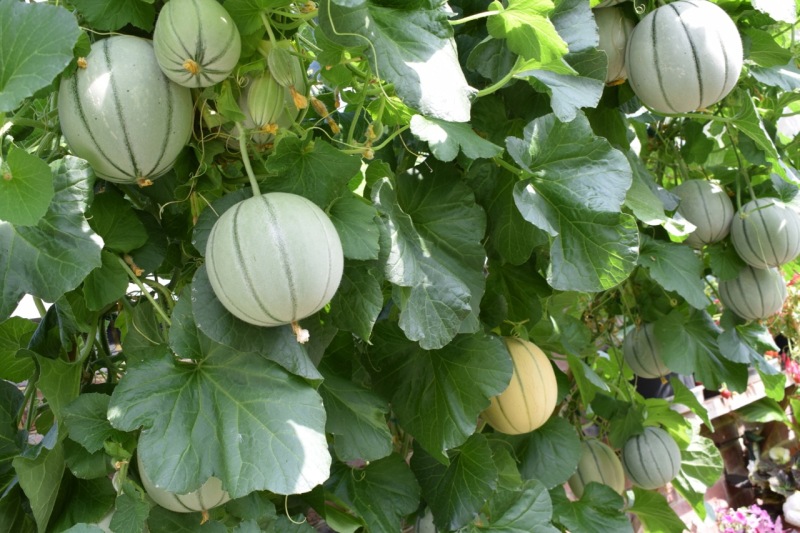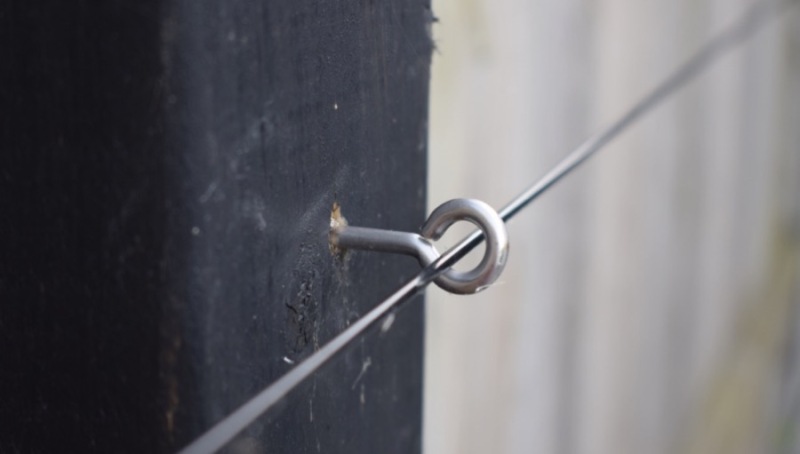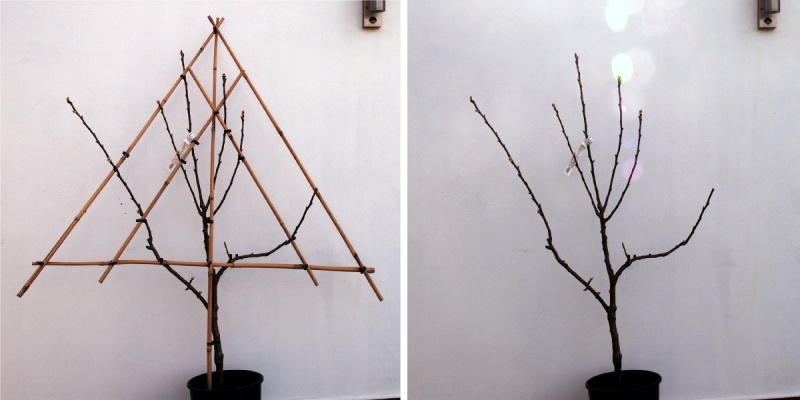Summer pruning is necessary for wall trained fruit to develop and maintain the desired form and encourage fruit production. It should be carried out in July for cherries, gages and plums and in August for apples and pears. You will need nice sharp secateurs, bamboo canes and plant ties.
The purpose of summer pruning is:
- To remove new vegetative (leafy) growth
- To reduce the tree’s vigour
- To allow air and sun to get to ripening fruit
- To remove shoots growing towards the fence or wall
- To encourage the formation of fruiting spurs
- To extend the permanent framework
Getting started
Look carefully at the two photos below, showing a trained (fan) fruit tree before and after summer pruning.

Before summer pruning – note the long new shoots.

After summer pruning – the long shoots have been shortened or tied in to bamboo canes to extend the permanent framework.
Step-by-Step

1. Identify the long shoots that have grown this year.

2. Take one of the shoots and count up 4 or 5 leaves from the base.

3. Cut off the shoot at this point just above a leaf.

4. Only a short ‘spur’ with 4 or 5 leaves should remain. This spur will tend to develop flowering buds in future.

5. Any shoots that are growing towards the fence should be cut out entirely at their base, flush with the branch they sprout from. This will prevent regrowth from this point in the future.
To extend the permanent framework

6. Identify a shoot that is in the right place to create a new permanent branch to extend your trained form. Prune back all other shoots as per 2-4 above.

7. Tie the remaining shoot to a bamboo cane and gently bend it into position. Tie the cane to the wire supports on your fence or wall.

8. Shoots coming from the tips of permanent branches can either be tied in to extend the framework or they can be cut off if they have reached the required extent.
Adjusting the permanent framework
9. As permanent framework branches become longer than their supporting canes it will be necessary to replace the canes with longer ones.
10. If branches are only one or two years old they will probably be flexible enough to raise or lower by a few degrees if required to adjust the shape and spacing of the framework, but as branches age they become more brittle and may snap if bent too far.
10. Finally, check all old ties and ensure they are not strangling the growing stems. Loosen and replace them as necessary.
>Recommended Link: Video tutorial on Summer Pruning
SaveSave
SaveSave

















